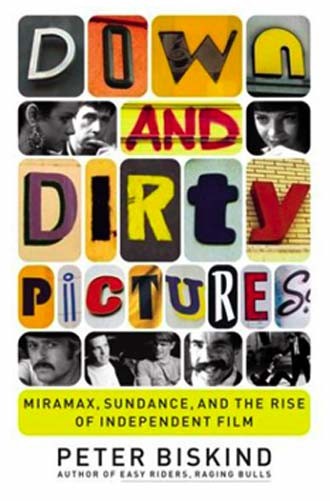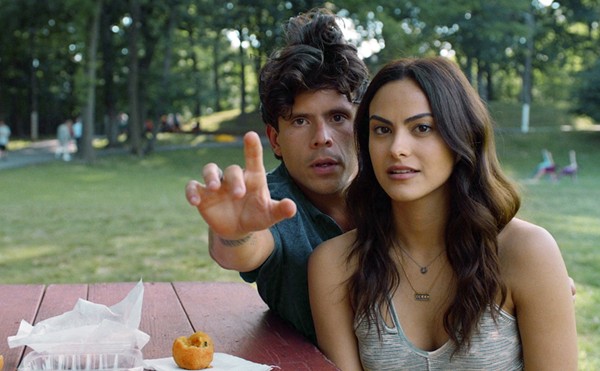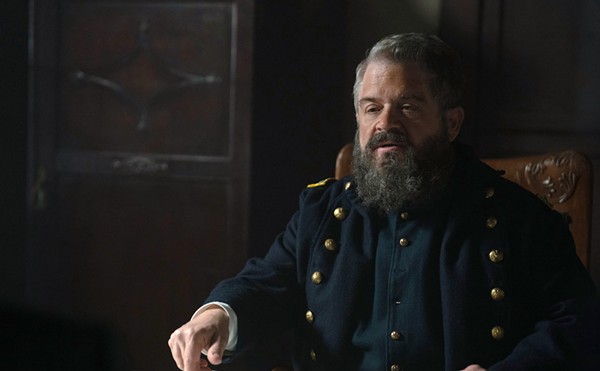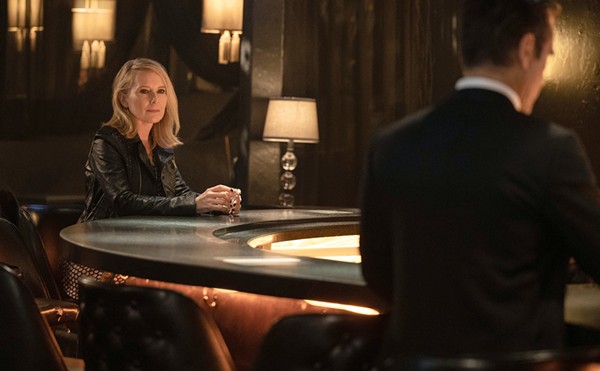| |
Being an arrogant, talentless hack is not often considered a real handicap in Hollywood. It certainly has worked for screenwriter Joe Eszterhas - the mighty pen behind Showgirls, Flashdance, and Basic Instinct - in the past. But with his new memoir, Hollywood Animal (Knopf, $26.95), even Eszterhas' outrageously overinflated sense of self-worth isn't enough to hide the lack of stimulating content. Ostensibly a renunciation of the high-living scribe's past vulgarity, it comes off instead like the insincere job applicant who when asked what his biggest flaw is, says, "I'm a workaholic." Of the few nice tidbits of gossip here, most involve Robert Evans - who has already told his own story so much more engagingly in The Kid Stays in the Picture.
The gossip is much more entertaining in Peter Biskind's Down and Dirty Pictures (Simon & Schuster, $26.95), the late-'80s-onward follow-up to his bestselling Easy Riders, Raging Bulls. The book is a must for anyone interested in the indie-film boom. Despite having quite a few problems, Biskind has a noted flexibility with regard to truthtelling; he's not the kind of person who goes out of his way to verify a questionable quote that makes for a good story. He also tends to get knotted up in his own jumbled chronology and obsesses on certain parts of a story only to gloss over equally interesting facets.
The awkwardness of a single sentence demonstrates something that happens on a larger scale throughout the book: "Way back in the summer of 1982, Neil Jordan, whose Mona Lisa in 1986 had been an art house hit, hatched a tale he called, alternatively, The Soldier's Story or The Soldier's Wife." The sentence starts off in the past, then refers to a future past in the past tense, only to fall back unconvincingly into the initial time period. You would call it sloppy editing if it weren't so representative of Biskind's method. (Biskind can be even worse with pronouns, tossing out handfuls of "he"s and letting you guess who he's talking about.)
| |
Biskind gives good gossip, but Village Voice critic J. Hoberman does a more compelling job of painting a period in The Dream Life (The New Press, $29.95), which isn't a film history so much as a unified theory of pop and politics, beginning in the '60s and carrying into that next ugly decade. Unlike most critics, who at their most ambitious will suggest political content in a single film, Hoberman (taking his lead from Siegfried Kracauer's landmark critical work From Caligari to Hitler) dares to view a whole country's worth of moviemaking in the context of the climate that created it and the way it was digested by moviegoers - and by politicians, who in turn created policies that colored the worldview of the next year's movies. It's such an ambitious work that citing examples here would take pages of explanation, but the author wraps his mind around the subject impressively, and makes strong cases for some truly startling conclusions.
Finally, if Hoberman's intellect is too daunting, a lovely little book by Rudy & Barbara Franchi called Miller's Movie Collectibles (Mitchell Beazley, $26.95) has enough pretty pictures to push the big ideas out of your head. Essentially a guide for novice collectors, it's also a treat for those of us who wouldn't pay $200,000 for an original King Kong poster even if we were making Peter Jackson-size salaries: The images here range from the very familiar to the exotic - oddly sized film noir lobby cards, enigmatic Czech ads for The Seven Year Itch, and a classic garishly-colored treatment for the original The Mummy. While the text does an admirable job of explaining the nuances of the collectibility of this stuff, the wide variety of images makes you want more reproductions. Maybe that's the point. •


















